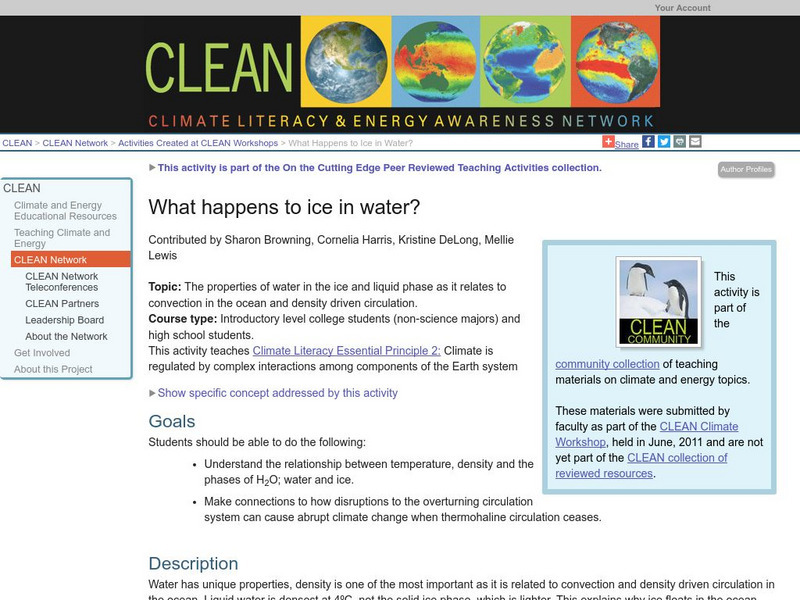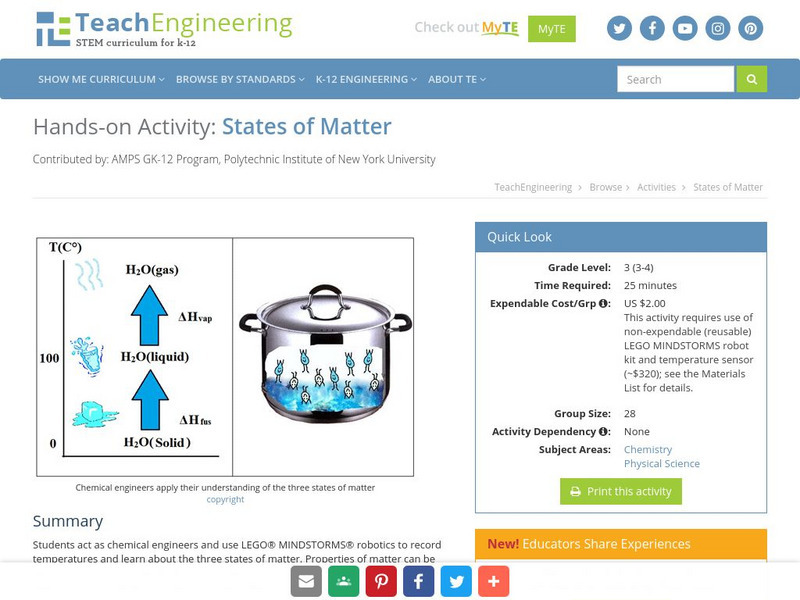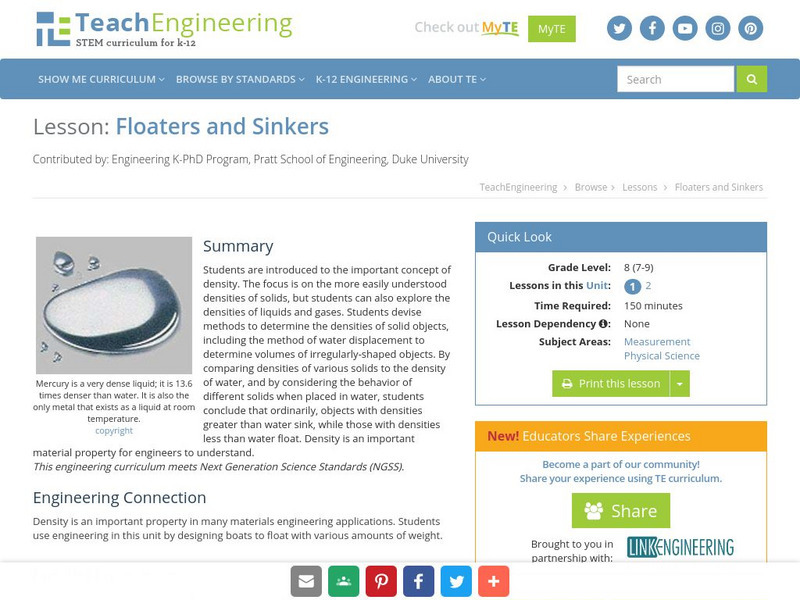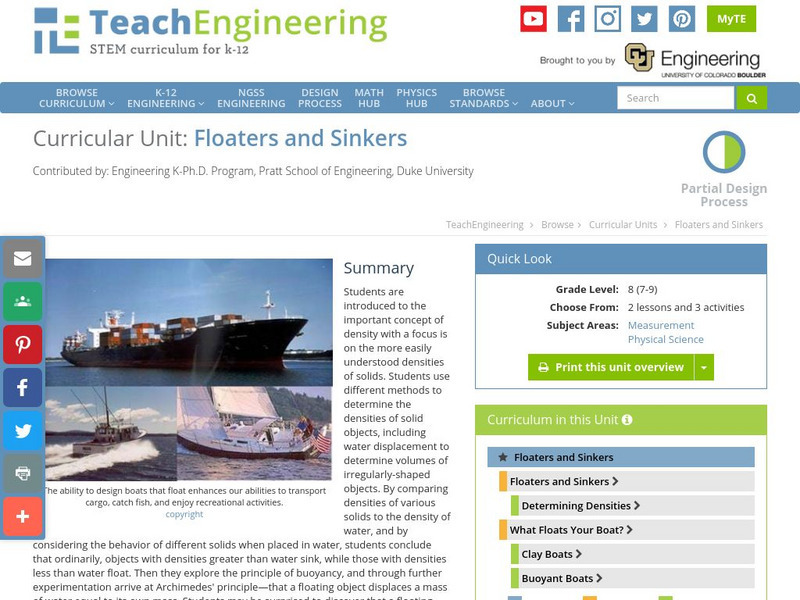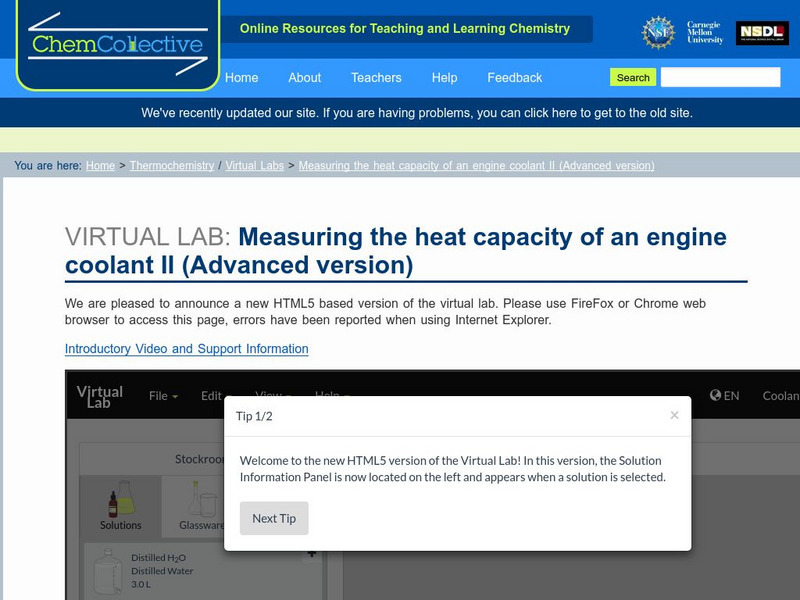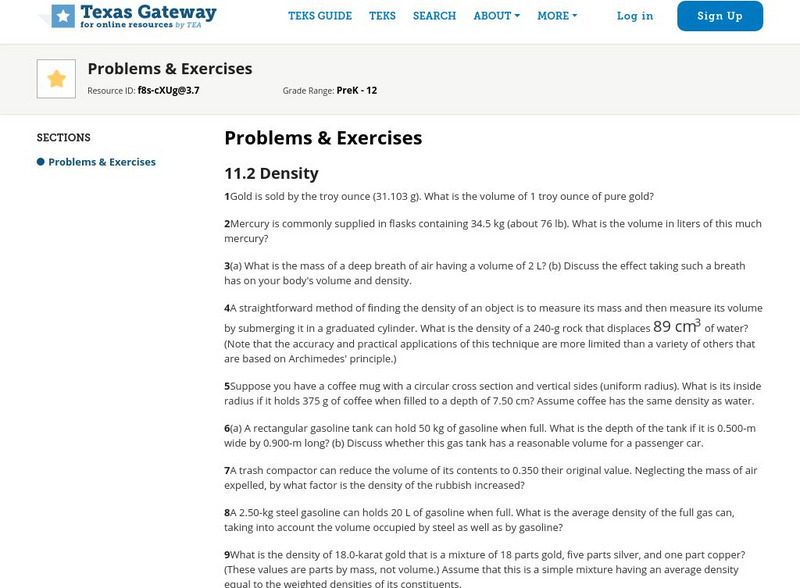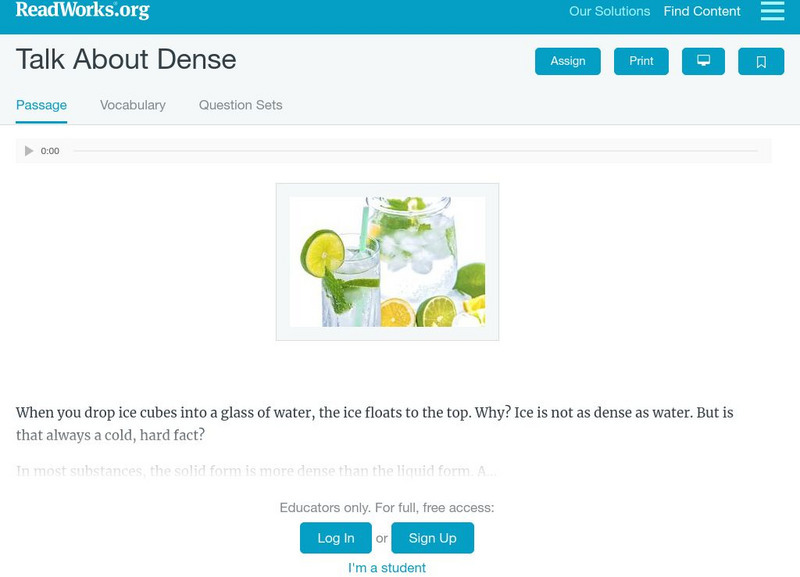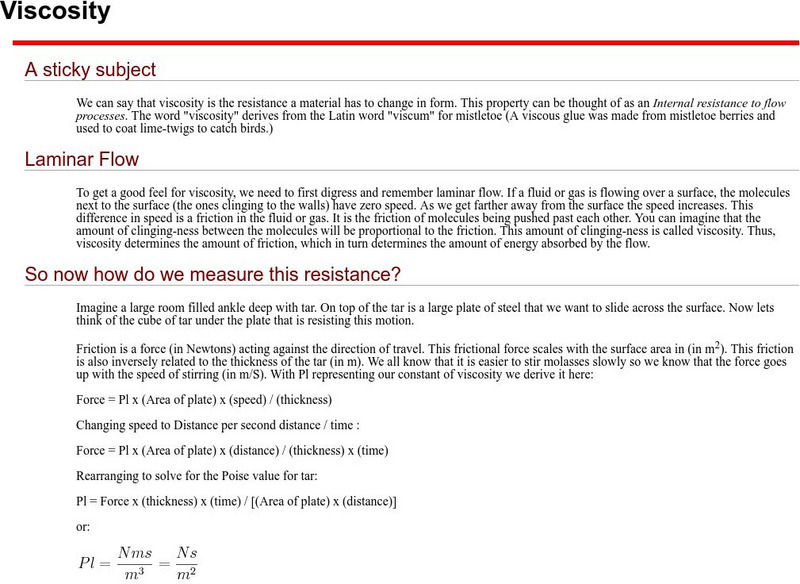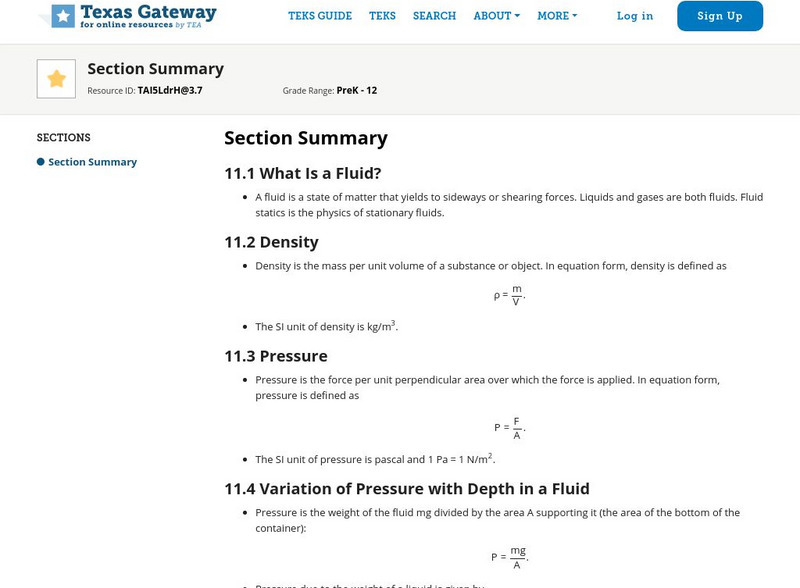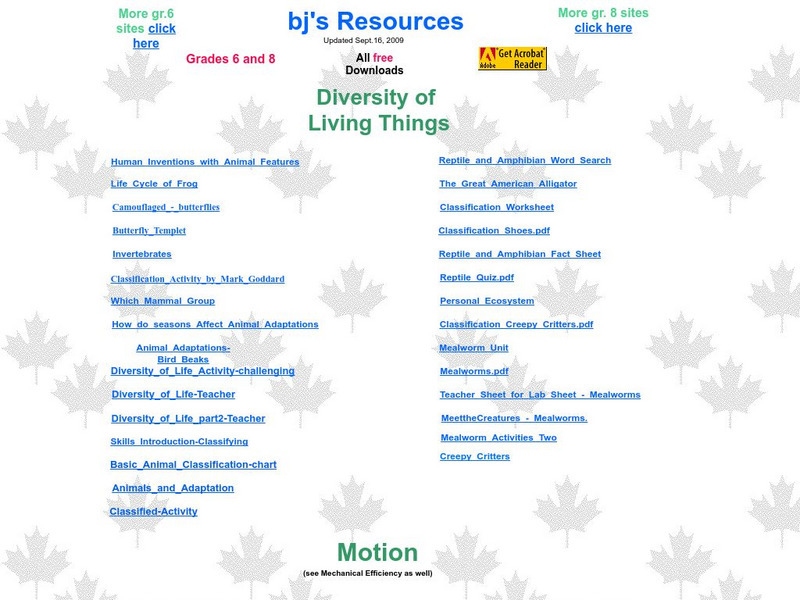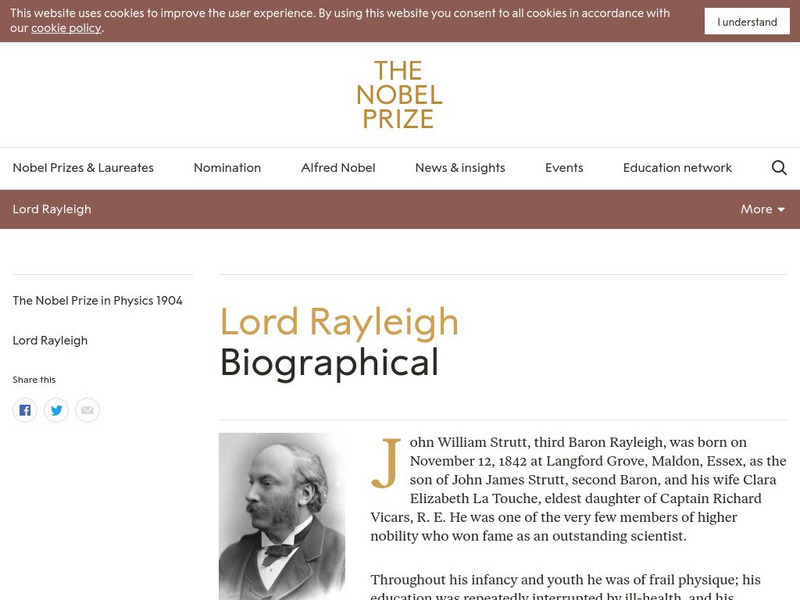Climate Literacy
Clean: What Happens to Ice in Water?
Students investigate the properties of water in the ice and liquid phase as it relates to convection in the ocean and density driven circulation, and ultimately the climate.
TeachEngineering
Teach Engineering: States of Matter
Students act as chemical engineers and use LEGO MINDSTORMS NXT robotics to record temperatures and learn about the three states of matter. Properties of matter can be measured in various ways, including volume, mass, density and...
TeachEngineering
Teach Engineering: Floaters and Sinkers
This lesson introduces students to the important concept of density. The focus is on the more easily understood densities of solids, but students can also explore the densities of liquids and gases. Students devise methods to determine...
TeachEngineering
Teach Engineering: Floaters and Sinkers
Through this curricular unit, students are introduced to the important concept of density. The focus is on the more easily understood densities of solids, but students may also explore the densities of liquids and gases. Students devise...
Georgia Department of Education
Ga Virtual Learning: Fluids
In this interactive module you will be introduced to a unit on fluid dynamics. Learn how an object's density relates to its mass and volume by completing various activities and interactives.
Chemistry Collective
Chem Collective: Measuring the Heat Capacity of an Engine Coolant Ii
Measure and compare the heat capacity of an unknown liquid with an unknown density.
Other
The Science House: Red, White, and Blue Ii
This colorful demonstration illustrates the rule, "likes dissolve likes," by combining three, immiscible liquids to create a density column." Teacher notes provide background information.
CK-12 Foundation
Ck 12: Chemistry Simulation: Going Fishing
[Free Registration/Login Required] Students will be able to change the mass and volume of an item and observe if it floats, sinks, or remains at a certain depth in the water. Students will also be able to change the liquid in level 2.
Texas Education Agency
Texas Gateway: Ap Physics: Fluid Statics: Problems and Exercises
This is a list of 83 problems/exercises to solve based on the content in Chapter ll: Fluid Statics from the AP Physics online text.
American Chemical Society
Middle School Chemistry: Finding Volume: Water Displacement Method
Students use the water-displacement method to find the volume of different rods that all have the same mass.
Exploratorium
Exploratorium: Science Snacks: Eyedropper Hydrometer
Deepen the students' understanding of density by constructing a simple hydrometer that can be used to compare the densities of different solutions.
Read Works
Read Works: Talk About Dense
[Free Registration/Login Required] An informational text explaining the density of solids and liquids. A question sheet is available to help students build skills in reading comprehension.
Exploratorium
Exploratorium: Salt Volcano
By making oil float on water--with the help of other ingredients--students can create a lava-lite effect.
Other
Transtronics: Viscosity
This site provides extensive information on viscosity. Different formulas and examples are given with regards to viscosity.
CPALMS
Florida State University Cpalms: Florida Students: Journey to the Center of the Earth
Learn about the layers of the Earth.
Texas Education Agency
Texas Gateway: Ap Physics: Fluid Statics: Summary
This page provides a summary of each section of Chapter 11: Fluid Statics from the AP Physics online text.
PBS
Pbs Teachers: What's More Dense
Compare the density of water, corn oil and corn syrup by trying to float different items in each material and then putting all three liquids into one container.
Science is Fun
Science Is Fun: Dancing Raisins
An experiment in buoyancy which involves making raisins float by using carbonated soda pop. Students then try the same test with other materials. Instructions for making one's own carbonated liquid are also provided.
Science Buddies
Science Buddies: Can Water Float on Water?
Of course it can, you say: ice is water and ice floats. And you're right. But we're talking about water in the liquid phase Can liquid water float on water? The goal of this project is to investigate what happens to layers of water with...
My Science Site
Life Systems: Cells, Tissues, Organs
Extensive site for teachers provides some helpful resources that pertain to plant and animal cells. Includes a microscope diagram as well as plant, animal and pond labs. Also contains links to structures and mechanisms, matter and...
Nobel Media AB
The Nobel Prize: Lord Rayleigh Biographical
At this site from the Nobel e-Museum, you can read about the scientific work of Lord Rayleigh (1842-1919 CE). This article includes information on his education and experiments with light and sound waves.
Energy4Me
Energy4me: Exploring Oil Seeps
How does oil seep naturally from beneath layers of rock to the surface of the ocean?
Mocomi & Anibrain Digital Technologies
Mocomi: Why Oil and Water Don't Mix
Investigate the science behind this age old question. Find out the role density and polarity play in the liquids.
Other popular searches
- Liquid Density Quiz
- Liquid Density Experiments
- Liquid Density Egg
- Liquid Density 10 Layers
- Measuring Liquid Density
- Liquid Density Water
- Density Lab Liquid
- Density Lab Bottle Liquid Ed
- Density Liquid


